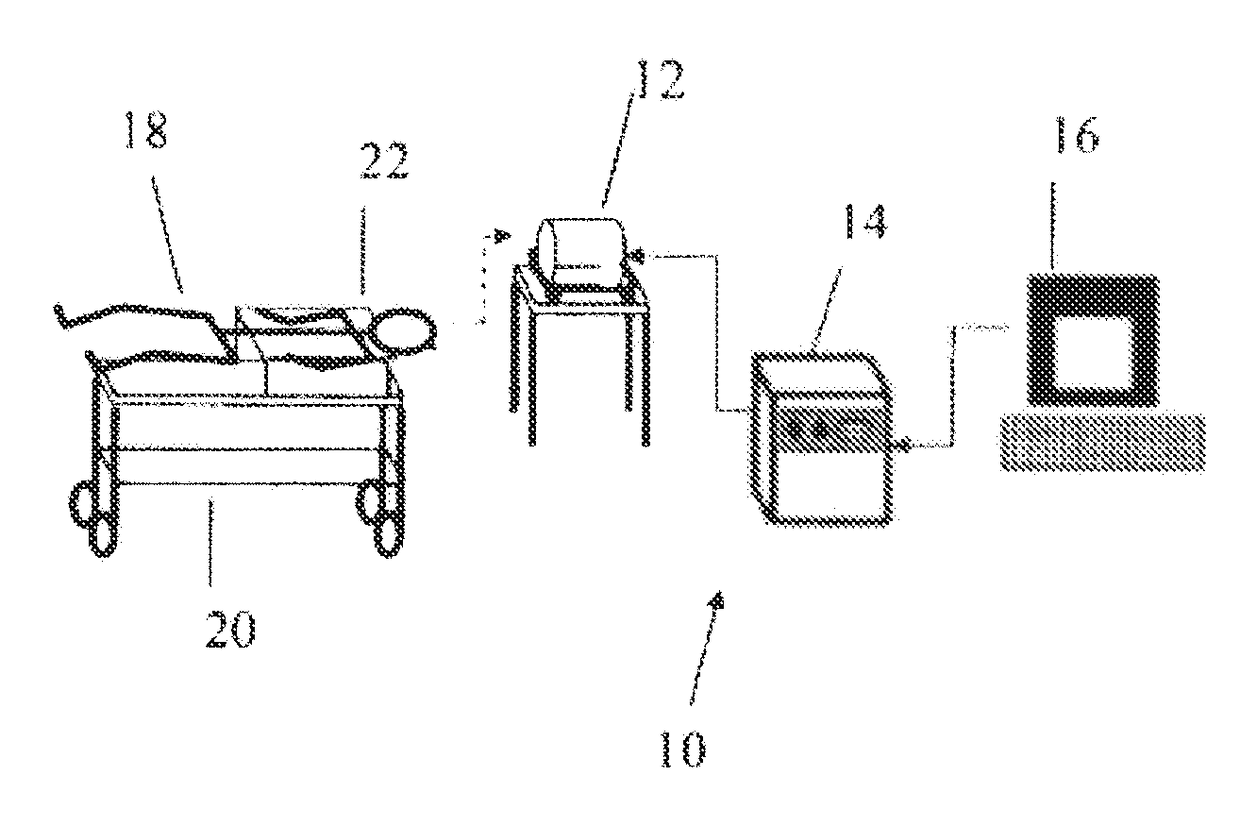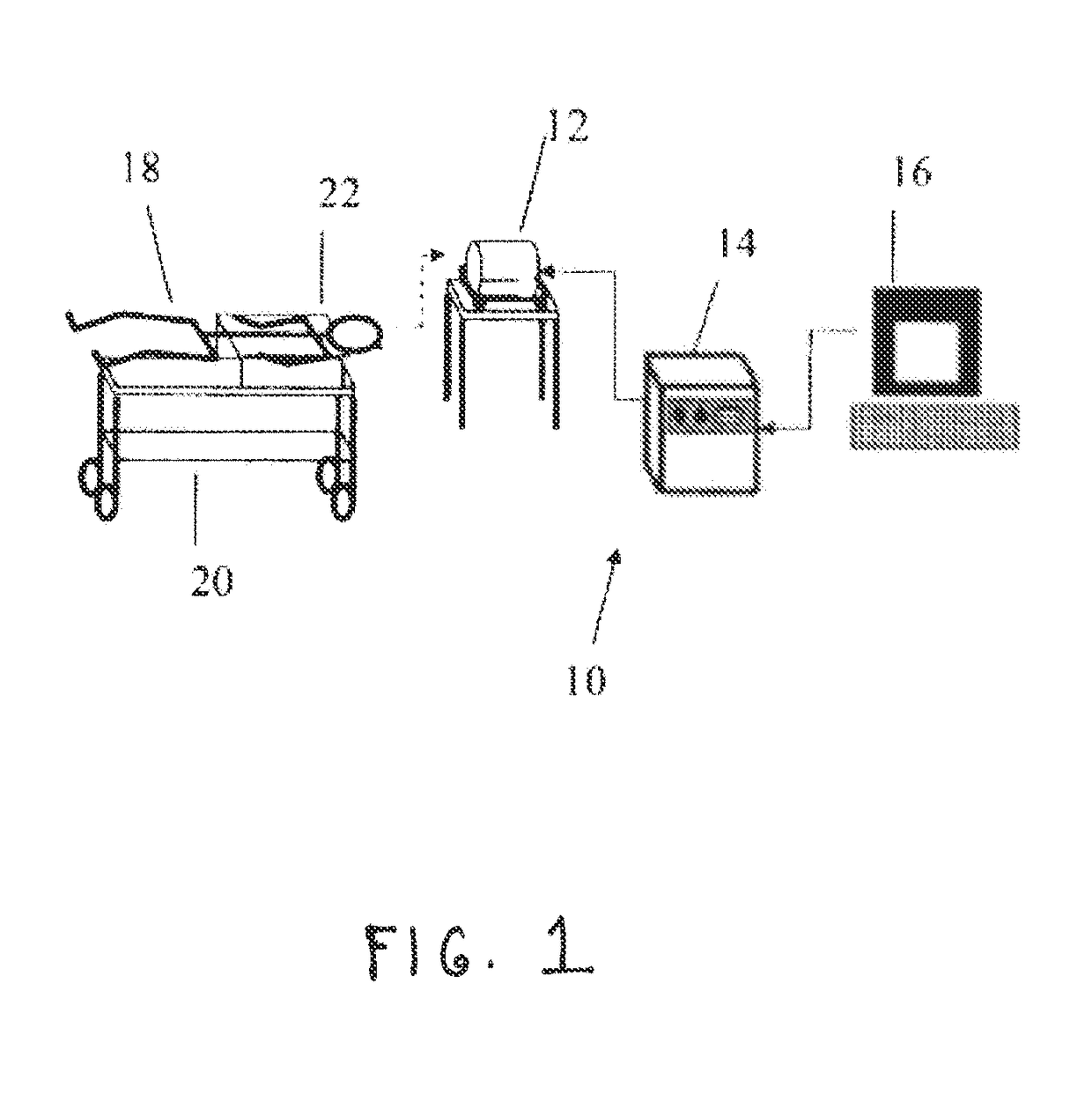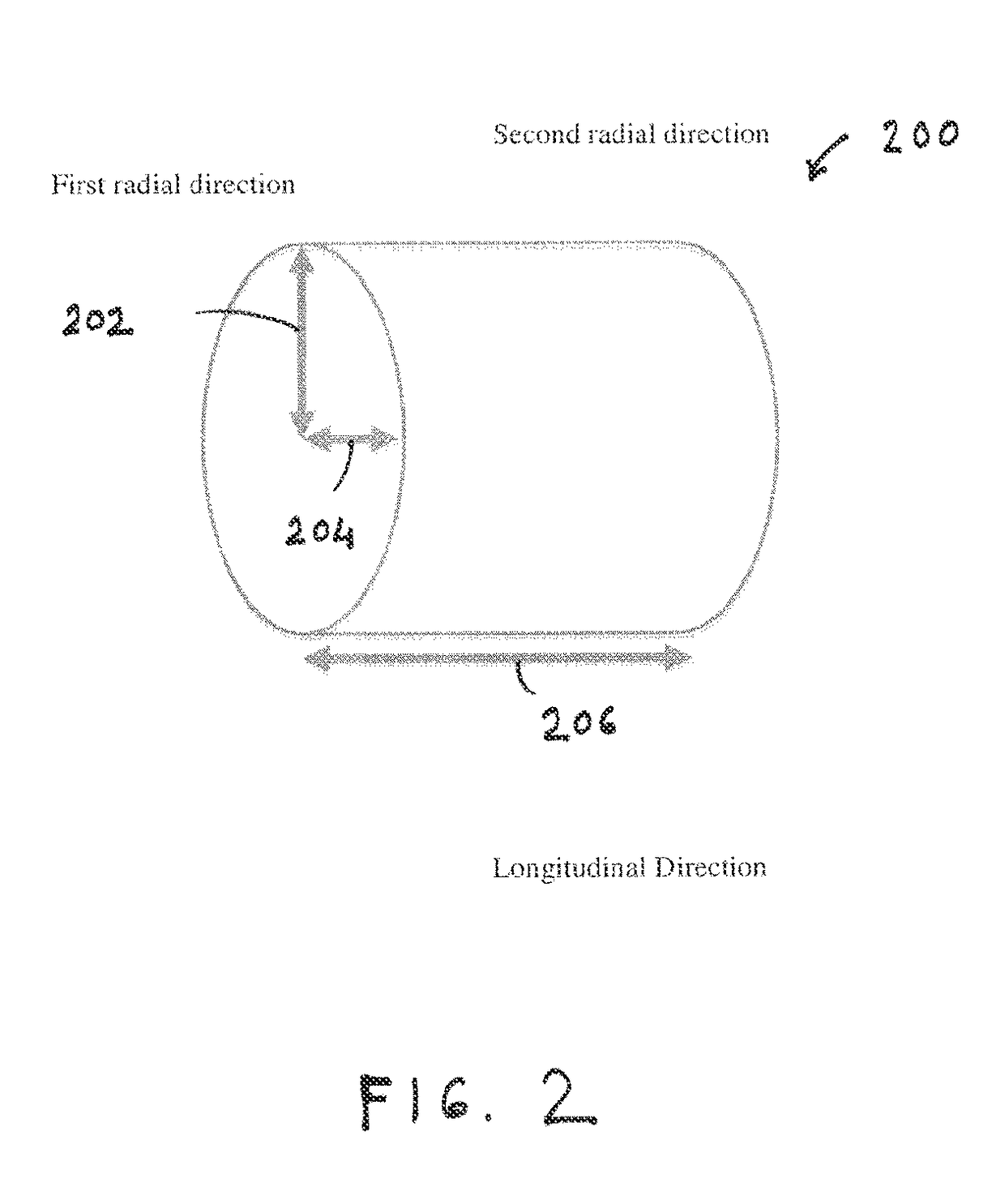Magnetic field stimulation
a magnetic field and stimulation technology, applied in magnetotherapy, magnetotherapy using coils/electromagnets, magnetotherapy, etc., can solve the problems of patients declining participation, rtms treatment can be unpleasant, and agents can be limited in efficacy and other problems, to achieve the effect of less bulk, less bulk, and less hea
- Summary
- Abstract
- Description
- Claims
- Application Information
AI Technical Summary
Benefits of technology
Problems solved by technology
Method used
Image
Examples
Embodiment Construction
[0045]A device 10 according to an embodiment of the present invention is shown in FIG. 1. The device 10 has a magnetic coil module 12, an amplifier 14, and a waveform generator 16. The waveform generator 16 (e.g., a general-purpose programmable computer or a purpose-built electric circuit) provides an electrical pulse sequence to the amplifier 14, which amplifies the electrical signals and provides them to the magnetic coil 12. The coil 12 produces a magnetic field in response to the electrical signals received from the amplifier 14. If the electrical signals vary in time, the magnetic field typically induces an electric field in air.
[0046]The coil module in various embodiments of an LFMS device according to the present invention includes a coil and a housing for the coil. The coil includes one or more elements, each of which generates a magnetic field that may induce a target electric field in air, and a subject's brain can be disposed in the region where the electric field is indu...
PUM
 Login to View More
Login to View More Abstract
Description
Claims
Application Information
 Login to View More
Login to View More - R&D
- Intellectual Property
- Life Sciences
- Materials
- Tech Scout
- Unparalleled Data Quality
- Higher Quality Content
- 60% Fewer Hallucinations
Browse by: Latest US Patents, China's latest patents, Technical Efficacy Thesaurus, Application Domain, Technology Topic, Popular Technical Reports.
© 2025 PatSnap. All rights reserved.Legal|Privacy policy|Modern Slavery Act Transparency Statement|Sitemap|About US| Contact US: help@patsnap.com



